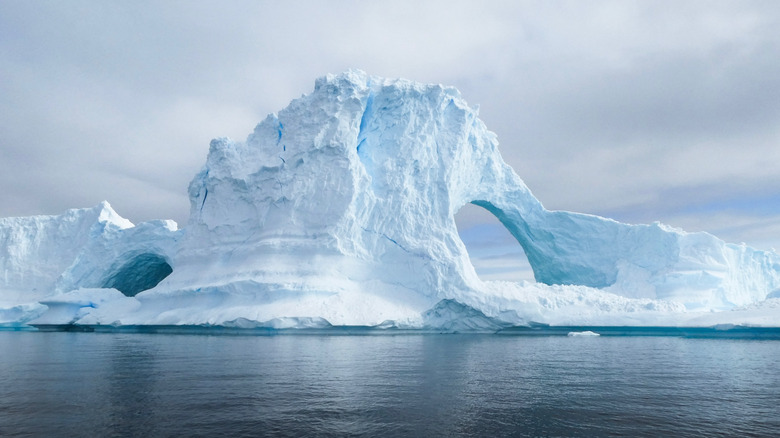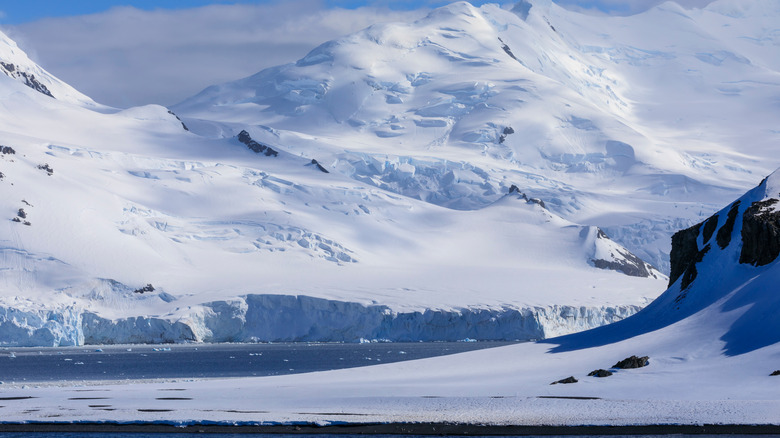The Real Reason Antarctica Is Actually A Desert
For many people around the world, the word "desert" tends to conjure a very specific image. As depicted in popular culture, a desert generally consists of a great expanse of sand, the occasional oasis, and scorching temperatures.
The Sahara Desert, for instance, is the largest hot desert in the world, per World Atlas, covering almost a third of the continent of Africa. It certainly is hot, too: The highest temperature on record there was a scorching 136.4 degrees Fahrenheit, which was recorded in Libya's Aziziyah.
The opposite of a desert, you might think, would be somewhere like the South Pole, a magnificent frozen wilderness that certainly isn't going to threaten Aziziyah's temperature record any time soon. Curiously, though, the continent of Antarctica is actually a desert too. Regions like the scorching Sahara and the icy Antarctica share some crucial features in common that allow them to share the "desert" designation.
One of the driest places on Earth
Merriam-Webster offers a very specific definition of a desert, calling it "arid land with usually sparse vegetation." It also adds, "such land having a very warm climate and receiving less than 25 centimeters (10 inches) of sporadic rainfall annually." All of this, except the warm climate, is true of Antarctica.
It is this barren dryness that perhaps best defines a desert. According to Aurora Expeditions, the continent of Antarctica takes the concept of dryness to absurd new levels. To the east of the continent are the McMurdo Dry Valleys, which, per Management Group for the Area, is an intriguing and varied ice-free region boasting everything from mountains to sand dunes.
Aurora Expeditions states that it may have been a mind-boggling 14 million years since there was any rain in this area, and that the continent's average yearly rainfall has been a meager 0.4 inches (10mm). As a result, it seems, the whole continent is classified as a desert: The Antarctic Polar Desert.
The complicated classification of deserts
Technically, per the U.S. Geological Survey, Antarctica is defined as a polar desert. This means that the month of highest temperatures doesn't exceed an average of 50 degrees Fahrenheit (10 degrees Celsius), and that no more than 250 millimeters of rain (or other sources of precipitation) is recorded on a yearly basis.
World Atlas states that the Arctic is also home to a vast desert: The appropriately-named Arctic Desert. Here, it seems, the islands of Franz Josef, Severnaya Zemlya and Novaya Zemlya (in the region of the North Pole itself) can be technically deemed the desert, rather than the whole continent itself. Nevertheless, with around the same level of rainfall as the Sahara Desert, it's just as worthy of the name.
The U.S. Geological Survey reports that it was Peveril Meigs who devised the system of classifying desert regions by precipitation in 1953. It classifies areas with an average 250-500 millimeters of precipitation a year as semiarid, with less than 250 millimeters each year as arid, and those regions that see no rain at all for a full year as extremely arid. Areas in the later two categories, using this model, are defined as deserts.


